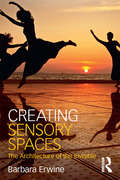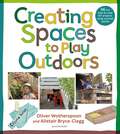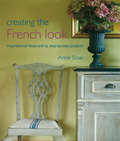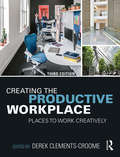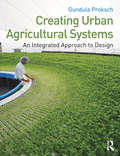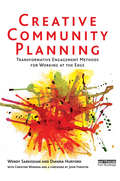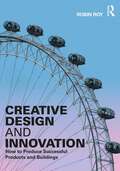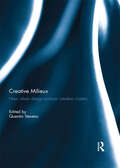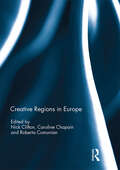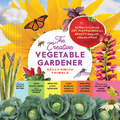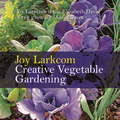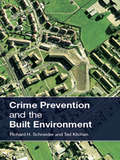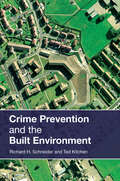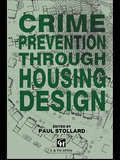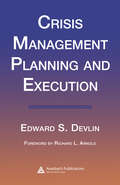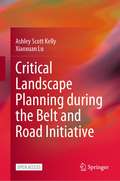- Table View
- List View
Creating Sensory Spaces: The Architecture of the Invisible
by Barbara ErwineCreating Sensory Spaces celebrates spaces enlivened with sensual richness and provides you with the knowledge and tools necessary to create them. Drawing on numerous built case studies in ten countries and illustrated with over 85 full color images, the book presents a new framework for the design of sensory spaces including light, color, temperature, smell, sound, and touch. Bridging across disciplines of architecture, engineering, phenomenology and perceptual psychology, this book informs the design of buildings and neighborhoods that reclaim the role of the body and all the senses in creating memorable experiences of place and belonging.
Creating Spaces to Play Outdoors: 36 fun step-by-step DIY projects using recycled pallets
by Alistair Bryce-Clegg Oliver WotherspoonTransform your play area with these environmentally friendly DIY projects for the Early Years!This one-of-a-kind book contains everything you need to build exciting, sustainable outdoor play spaces that can be adapted for any setting, big or small. There are 36 projects ranging from smaller designs such as the Bird Box Bookshelf and the Table-Top Ramp to larger structures such as the Hobbit Hole Door and the Wonky Stage that children can help build, using recycled pallet wood.Authors Alistair Bryce-Clegg and Oliver Wotherspoon are experts in Early Years play and have been instrumental in designing some of the very best outdoor play settings, including for George Clarke's Amazing Spaces and ITV's Love Your Garden. With their helpful illustrations, full-colour photographs, step-by-step instructions and advice on how the play spaces link to the EYFS Framework and support early learning, you don't need to be a DIY expert to build these simple and effective natural play areas.
Creating Spaces to Play Outdoors: 36 fun step-by-step DIY projects using recycled pallets
by Alistair Bryce-Clegg Oliver WotherspoonTransform your play area with these environmentally friendly DIY projects for the Early Years!This one-of-a-kind book contains everything you need to build exciting, sustainable outdoor play spaces that can be adapted for any setting, big or small. There are 36 projects ranging from smaller designs such as the Bird Box Bookshelf and the Table-Top Ramp to larger structures such as the Hobbit Hole Door and the Wonky Stage that children can help build, using recycled pallet wood.Authors Alistair Bryce-Clegg and Oliver Wotherspoon are experts in Early Years play and have been instrumental in designing some of the very best outdoor play settings, including for George Clarke's Amazing Spaces and ITV's Love Your Garden. With their helpful illustrations, full-colour photographs, step-by-step instructions and advice on how the play spaces link to the EYFS Framework and support early learning, you don't need to be a DIY expert to build these simple and effective natural play areas.
Creating the French Look: Inspirational ideas and 25 step-by-step projects
by Annie SloanThe French interior evokes a way of life to aspire to, with its good food, unhurried pace and, above all, its past for which many people feel nostalgia. Developed over hundreds of years, the French look reflects all tastes, from the cultivated grandeur of the chateau to the simplicity of rural living, and can be adapted to every home. Creating the French Look is divided into four styles: ‘Chateau’, ‘Country’, ‘Provençal’ and ‘Parisian’, and each “look” is applied to living rooms, kitchens, dining rooms, bedrooms and bathrooms plus outdoor living spaces. As well as describing each overall style, focusing on colours and fabrics, Annie Sloan emphasizes the details and accents required by each one, and, aided by 25 clearly explained step-by-step projects, shows how to achieve it. Among other things, she explains how to paint and distress furniture, and describes how to cover an armoire door with embroidered voile. Whatever interior you desire, this book will guide your choices from the grand statement of the painted armoire to the finishing touch of a little posy of lavender.
Creating the Productive Workplace: Places to Work Creatively
by Derek Clements-CroomeThe built environment affects our physical, mental and social well-being. Here renowned professionals from practice and academia explore the evidence from basic research as well as case studies to test this belief. They show that many elements in the built environment contribute to establishing a milieu which helps people to be healthier and have the energy to concentrate while being free to be creative. The health and well-being agenda pervades society in many different ways but we spend much of our lives in buildings, so they have an important role to play within this total picture. This demands us to embrace change and think beyond the conventional wisdom while retaining our respect for it. Creating the Productive Workplace shows how we need to balance the needs of people and the ever-increasing enabling technologies but also to take advantage of the healing powers of Nature and let them be part of environmental design. This book aims to lead to more human-centred ways of designing the built environment with deeper meaning and achieve healthier and more creative, as well as more productive places to work.
Creating the Productive Workplace: Places to Work Creatively
by Derek Clements-CroomeThe built environment affects our physical, mental and social well-being. Here renowned professionals from practice and academia explore the evidence from basic research as well as case studies to test this belief. They show that many elements in the built environment contribute to establishing a milieu which helps people to be healthier and have the energy to concentrate while being free to be creative. The health and well-being agenda pervades society in many different ways but we spend much of our lives in buildings, so they have an important role to play within this total picture. This demands us to embrace change and think beyond the conventional wisdom while retaining our respect for it. Creating the Productive Workplace shows how we need to balance the needs of people and the ever-increasing enabling technologies but also to take advantage of the healing powers of Nature and let them be part of environmental design. This book aims to lead to more human-centred ways of designing the built environment with deeper meaning and achieve healthier and more creative, as well as more productive places to work.
Creating Urban Agricultural Systems: An Integrated Approach to Design
by Gundula ProkschCreating Urban Agriculture Systems provides you with background, expertise, and inspiration for designing with urban agriculture. It shows you how to grow food in buildings and cities, operate growing systems, and integrate them with natural cycles and existing infrastructures. It teaches you the essential environmental inputs and operational strategies of urban farms, and inspires community and design tools for innovative operations and sustainable urban environments that produce fresh, local food. Over 70 projects and 16 in-depth case studies of productive, integrated systems, located in North America, Europe, and Asia ,are organized by their emphasis on nutrient, water, and energy management, farm operation, community integration and design approaches so that you can see innovative strategies in action. Interviews with leading architecture firms, including WORKac, Kiss + Cathcart, Weber Thompson, CJ Lim/Studio 8, and SOA Architectes, highlight the challenges and rewards you face when creating urban agriculture systems. Catalogs of growing and building systems, a glossary, bibliography, and abstracts will help you find information fast.
Creating Urban Agricultural Systems: An Integrated Approach to Design
by Gundula ProkschCreating Urban Agriculture Systems provides you with background, expertise, and inspiration for designing with urban agriculture. It shows you how to grow food in buildings and cities, operate growing systems, and integrate them with natural cycles and existing infrastructures. It teaches you the essential environmental inputs and operational strategies of urban farms, and inspires community and design tools for innovative operations and sustainable urban environments that produce fresh, local food. Over 70 projects and 16 in-depth case studies of productive, integrated systems, located in North America, Europe, and Asia ,are organized by their emphasis on nutrient, water, and energy management, farm operation, community integration and design approaches so that you can see innovative strategies in action. Interviews with leading architecture firms, including WORKac, Kiss + Cathcart, Weber Thompson, CJ Lim/Studio 8, and SOA Architectes, highlight the challenges and rewards you face when creating urban agriculture systems. Catalogs of growing and building systems, a glossary, bibliography, and abstracts will help you find information fast.
Creative Community Planning: Transformative Engagement Methods for Working at the Edge
by Wendy Sarkissian Christine WenmanCreative Community Planning provides clear access to emerging innovations in artistic, narrative, embodied and technological methods. Reflecting on the wide continuum of participatory practice, the authors explore the frontiers of community engagement within a fresh sustainability framework. Leading planning theorists, researchers and practitioners in the field reflect with the authors on the many successes and challenges in engaging with a diversity of people in rural and urban communities. These conversations reveal creativity as key to enhancing existing engagement practices. Concepts and practical applications thread through the book, including community visioning, participatory research and reporting, conflict resolution, poetry and planning language, theatre, photography, film and websites.
Creative Community Planning: Transformative Engagement Methods for Working at the Edge (Earthscan Tools For Community Planning Ser.)
by Wendy Sarkissian Christine WenmanCreative Community Planning provides clear access to emerging innovations in artistic, narrative, embodied and technological methods. Reflecting on the wide continuum of participatory practice, the authors explore the frontiers of community engagement within a fresh sustainability framework. Leading planning theorists, researchers and practitioners in the field reflect with the authors on the many successes and challenges in engaging with a diversity of people in rural and urban communities. These conversations reveal creativity as key to enhancing existing engagement practices. Concepts and practical applications thread through the book, including community visioning, participatory research and reporting, conflict resolution, poetry and planning language, theatre, photography, film and websites.
Creative Connections: Aspects of the Garden Design Process (Workshops on Garden Design)
by Barbara Hunt Elizabeth WhateleyGarden fashions continually evolve but an understanding of fundamental principles underlies all thoughtful design. So all novice garden designers and landscape contractors must make themselves familiar with the elements that constitute garden space. This book is packed with line drawings, informal sketches and sections of actual garden plans that have evolved from the Authors' wide experience. Colour photographs - many of which are linked to plans within the text - all help to enhance the principles, problems and solutions that designers will have to face. With such information in front of them, student readers will be encouraged to look, think and analyse before taking up pencil, computer mouse or spade. Already on college reading lists, this book is a must for all beginners starting out on careers as garden designers and builders.
Creative Design and Innovation: How to Produce Successful Products and Buildings
by Robin RoyUsing many real-world examples and cases, this book identifies key factors and processes that have contributed to the creation of successful new products, buildings, and innovations, or resulted in some failures. Such factors include the creativity of individuals and groups, their sources of inspiration, the processes of creative design and innovation, and the characteristics of the products, buildings, and innovations themselves. Much has been written about creativity and innovation, but what helps to foster creativity, enable creative ideas to be translated into practical designs, and ensure those new products or buildings succeed as innovations on the market or in use? This book discusses these elements through the author’s origination and analysis of examples and case studies ranging from the revolutionary innovation of the smartphone, through radical innovations in domestic appliances and sustainable housing, to creative designs of contemporary jewellery. The broad range of examples and cases include product and fashion design, filmmaking and fine art, as well as industrial design, engineering, and architecture, offering lessons for creatives, designers, and innovators from many subject backgrounds. Analysis of the different factors, successes, and failures are presented in text boxes throughout the book to allow readers to easily understand the key lessons from each example or case, with numerous colour visuals, diagrams, and charts for illustration. This book is a must-read for a broad audience interested in creativity, design, and innovation, including practitioners in design, engineering, architecture, and product management, and students and instructors of those subjects.
Creative Design and Innovation: How to Produce Successful Products and Buildings
by Robin RoyUsing many real-world examples and cases, this book identifies key factors and processes that have contributed to the creation of successful new products, buildings, and innovations, or resulted in some failures. Such factors include the creativity of individuals and groups, their sources of inspiration, the processes of creative design and innovation, and the characteristics of the products, buildings, and innovations themselves. Much has been written about creativity and innovation, but what helps to foster creativity, enable creative ideas to be translated into practical designs, and ensure those new products or buildings succeed as innovations on the market or in use? This book discusses these elements through the author’s origination and analysis of examples and case studies ranging from the revolutionary innovation of the smartphone, through radical innovations in domestic appliances and sustainable housing, to creative designs of contemporary jewellery. The broad range of examples and cases include product and fashion design, filmmaking and fine art, as well as industrial design, engineering, and architecture, offering lessons for creatives, designers, and innovators from many subject backgrounds. Analysis of the different factors, successes, and failures are presented in text boxes throughout the book to allow readers to easily understand the key lessons from each example or case, with numerous colour visuals, diagrams, and charts for illustration. This book is a must-read for a broad audience interested in creativity, design, and innovation, including practitioners in design, engineering, architecture, and product management, and students and instructors of those subjects.
Creative Milieux: How Urban Design Nurtures Creative Clusters
by Quentin StevensThe so-called ‘creative industries’ are increasingly being presented as an important tool of urban regeneration and economic development. Until now, research on the clustering of such activities has been limited to economics, geography and urban policy. This book is the first to gather together emerging research in urban design and spatial planning that explores what characteristics of the built form of cities support the distinctive activity patterns of various creative industries, and how and why they cluster together at a range of local scales. The book offers detailed case studies and comparative analyses of creative city neighbourhoods on five continents. Contributions examine urban forms, building types, and other qualities of place that attract and retain creative workers and foster creative production, outlining a range of methodologies for studying them. Taken altogether, Creative Milieux offers new insights for urban design practice, and for its role in wider urban policy. This book was originally published as a special issue of the Journal of Urban Design.
Creative Milieux: How Urban Design Nurtures Creative Clusters
by Quentin StevensThe so-called ‘creative industries’ are increasingly being presented as an important tool of urban regeneration and economic development. Until now, research on the clustering of such activities has been limited to economics, geography and urban policy. This book is the first to gather together emerging research in urban design and spatial planning that explores what characteristics of the built form of cities support the distinctive activity patterns of various creative industries, and how and why they cluster together at a range of local scales. The book offers detailed case studies and comparative analyses of creative city neighbourhoods on five continents. Contributions examine urban forms, building types, and other qualities of place that attract and retain creative workers and foster creative production, outlining a range of methodologies for studying them. Taken altogether, Creative Milieux offers new insights for urban design practice, and for its role in wider urban policy. This book was originally published as a special issue of the Journal of Urban Design.
Creative Regions in Europe
by Nick Clifton Caroline Chapain Roberta ComunianCreative and cultural industries, broadly defined, are now considered by many policy makers across Europe at the heart of their national innovation and economic development agenda. Similarly, many European cities and regions have adopted policies to support and develop these industries and their local support infrastructures. However this policy-making agenda implicitly incorporates (and indeed often conflates) elements of cultural and creative industries, the creative class and so on, which are typically employed without due consideration of context. Thus a better understanding is required. To this end, this book features eight research papers, split evenly with regard to geographical focus between the UK and continental Europe (the latter covering Spain, Germany, France, Luxemburg and Belgium individually and in combination). There is also a similar division in terms of those focusing primarily on the policy level (the chapters of Clifton and Macaulay, Mould and Comunian, Pareja-Eastaway and Pradel i Miquel, Perrin) and those of the individual creative actor (the chapters of Alfken et al, Bennett et al, Wedemeier and Brown). This book was previously published as a special issue of European Planning Studies.
Creative Regions in Europe
by Nick Clifton Caroline Chapain Roberta ComunianCreative and cultural industries, broadly defined, are now considered by many policy makers across Europe at the heart of their national innovation and economic development agenda. Similarly, many European cities and regions have adopted policies to support and develop these industries and their local support infrastructures. However this policy-making agenda implicitly incorporates (and indeed often conflates) elements of cultural and creative industries, the creative class and so on, which are typically employed without due consideration of context. Thus a better understanding is required. To this end, this book features eight research papers, split evenly with regard to geographical focus between the UK and continental Europe (the latter covering Spain, Germany, France, Luxemburg and Belgium individually and in combination). There is also a similar division in terms of those focusing primarily on the policy level (the chapters of Clifton and Macaulay, Mould and Comunian, Pareja-Eastaway and Pradel i Miquel, Perrin) and those of the individual creative actor (the chapters of Alfken et al, Bennett et al, Wedemeier and Brown). This book was previously published as a special issue of European Planning Studies.
The Creative Vegetable Gardener: 60 Ways to Cultivate Joy, Playfulness, and Beauty along with a Bounty of Food
by Kelly Smith TrimbleWith interest in vegetable gardening booming, lifestyle editor and master gardener Kelly Smith Trimble offers designs, ideas, and inspiration for making the vegetable garden a joyful, creative space that reflects each gardener's distinctive aesthetic, integrates beauty with functionality, and offers a sanctuary for both people and pollinators, along with a bounty of nutritious, homegrown food.
Creative Vegetable Gardening: Accenting Your Vegetables With Flowers
by Joy LarkcomJoy Larkcom believes passionately that a vegetable garden, whatever its size, can be as beautiful as a conventional garden of flowers and shrubs. In Creative Vegetable Gardening she shows how the principles of good design can be applied to a kitchen plot and how to use the vibrant textures, colours, and forms of vegetables, herbs and fruit to create glorious effects and intriguing patterns without jeopardizing their productivity. Inspirational colour photographs of potagers and kitchen plots capture the essence of the creative approach to vegetable growing. Techniques are described in clear stages and illustrated with full-colour step-by-step artworks, while an A-Z directory includes more than 150 edible plants with key facts on their cultivation, supplemented with ideas on how to grow them to maximum ornamental effect. Beautifully illustrated, intricate plans of five types of potager - formal, informal, small, urban and winter - add to the wealth of inspirational information.
Crime Prevention and the Built Environment
by Ted Kitchen Richard H. SchneiderWith a comprehensive analysis, this book links theory, evidence and practical application to bridge gaps between planning, design and criminology. The authors investigate connections between crime prevention and development planning with an international approach, looking at initiatives in the field and incorporating an understanding of current responses to the growth of technology and terrorism.
Crime Prevention and the Built Environment
by Ted Kitchen Richard H. SchneiderWith a comprehensive analysis, this book links theory, evidence and practical application to bridge gaps between planning, design and criminology. The authors investigate connections between crime prevention and development planning with an international approach, looking at initiatives in the field and incorporating an understanding of current responses to the growth of technology and terrorism.
Crime Prevention Through Housing Design
by Paul StollardThis book provides specific guidance for architects, planners, and housing managers on designing to deter crime. While every estate and neighbourhood has different problems which require unique solutions, the process which leads to the solutions will be the same. This book provides specific guidance for architects, planners, and housing managers on designing to deter crime. While every estate and neighbourhood has different problems which require unique solutions, the process which leads to the solutions will be the same.The first three chapters review the various theories of crime prevention through design, and abstract from them a series of six key principles which can be applied to all housing projects. The remaining five chapters outline the practical application of these principles in the assessment, design and construction processes.The text of this book has been compiled and updated from two educational packages produced by the Institute of Advanced Architectural Studies and the Safe Neighbourhoods Unit. These were Safe as Houses (1988) and Safer Neighbourhoods (1989). Videos produced as part of those educational packages are available for use with this book.
Crime Prevention Through Housing Design
by Paul StollardThis book provides specific guidance for architects, planners, and housing managers on designing to deter crime. While every estate and neighbourhood has different problems which require unique solutions, the process which leads to the solutions will be the same. This book provides specific guidance for architects, planners, and housing managers on designing to deter crime. While every estate and neighbourhood has different problems which require unique solutions, the process which leads to the solutions will be the same.The first three chapters review the various theories of crime prevention through design, and abstract from them a series of six key principles which can be applied to all housing projects. The remaining five chapters outline the practical application of these principles in the assessment, design and construction processes.The text of this book has been compiled and updated from two educational packages produced by the Institute of Advanced Architectural Studies and the Safe Neighbourhoods Unit. These were Safe as Houses (1988) and Safer Neighbourhoods (1989). Videos produced as part of those educational packages are available for use with this book.
Crisis Management Planning and Execution
by Edward S. DevlinCrisis management planning refers to the methodology used by executives to respond to and manage a crisis and is an integral part of a business resumption plan. Crisis Management Planning and Execution explores in detail the concepts of crisis management planning, which involves a number of crises other than physical disaster. Defining th
Critical Landscape Planning during the Belt and Road Initiative
by Ashley Scott Kelly Xiaoxuan LuThis open access book traces the development of landscapes along the 414-kilometer China–Laos Railway, one of the first infrastructure projects implemented under China’s Belt and Road Initiative (BRI) and which is due for completion at the end of 2021. Written from the perspective of landscape architecture and intended for planners and related professionals engaged in the development and conservation of these landscapes, this book provides history, planning pedagogy and interdisciplinary framing for working alongside the often-opaque planning, design and implementation processes of large-scale infrastructure. It complicates simplistic notions of development and urbanization frequently reproduced in the Laos–China frontier region. Many of the projects and sites investigated in this book are recent “firsts” in Laos: Laos’s first wildlife sanctuary for trafficked endangered species, its first botanical garden and its first planting plan for a community forest. Most often the agents and accomplices of neoliberal development, the planning and design professions, including landscape architecture, have little dialogue with either the mainstream natural sciences or critical social sciences that form the discourse of projects in Laos and comparable contexts. Covering diverse conceptions and issues of development, including cultural and scientific knowledge exchanges between Laos and China, nature tourism, connectivity and new town planning, this book also features nine planning proposals for Laos generated through this research initiative since the railway's groundbreaking in 2016. Each proposal promotes a wider "landscape approach" to development and deploys landscape architecture’s spatial and ecological acumen to synthesize critical development studies with the planner's capacity, if not naive predilection, to intervene on the ground. Ultimately, this book advocates the cautious engagement of the professionally oriented built-environment disciplines, such as regional planning, civil engineering and landscape architecture, with the landscapes of development institutions and environmental NGOs.
